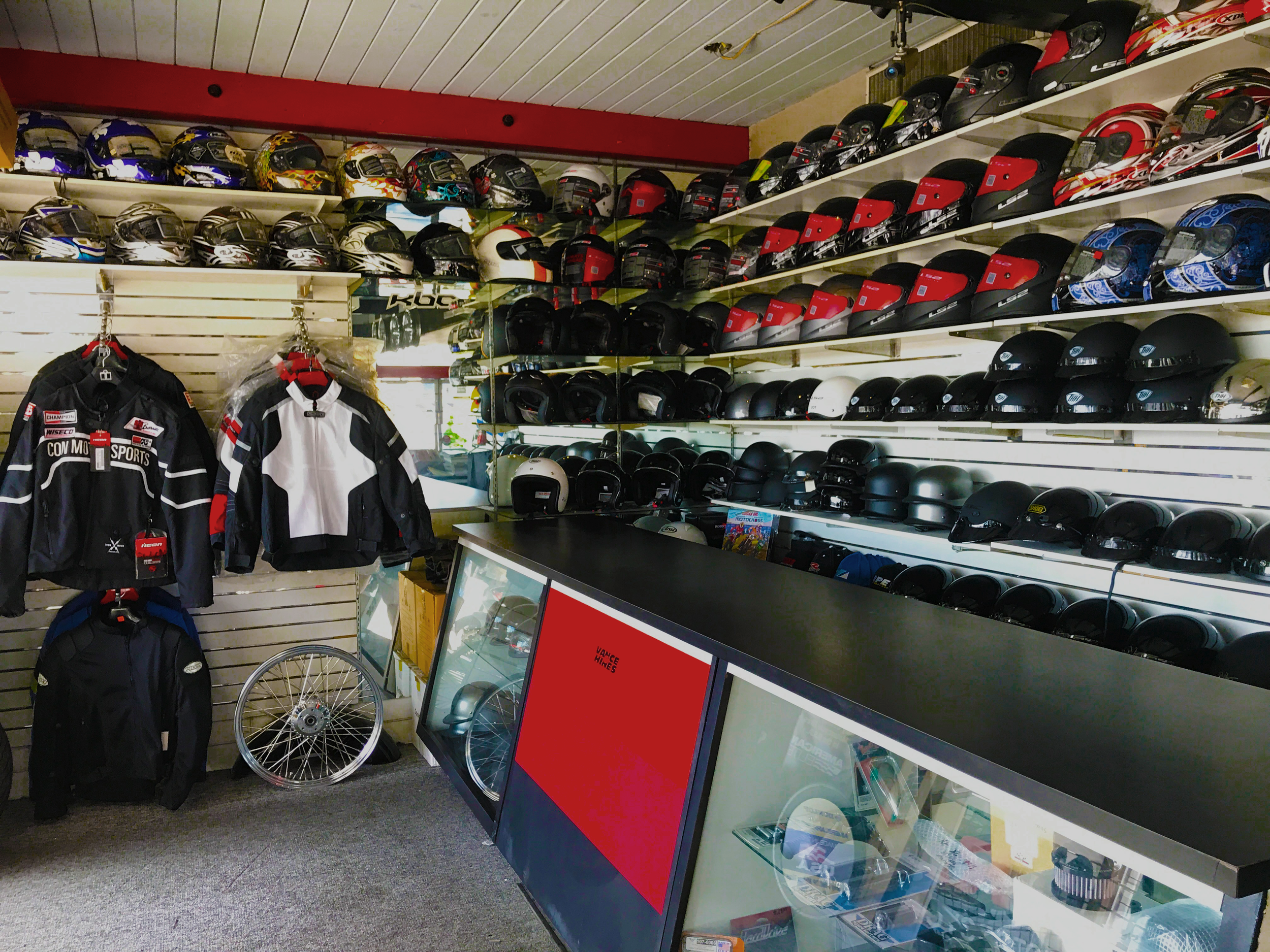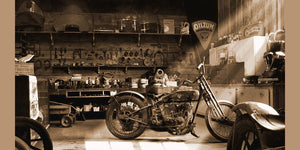Discover Top Quality Moto Parts NZ for All Your Motorcycle Needs
Discover Top Quality Moto Parts NZ for All Your Motorcycle Needs
Blog Article
Understanding the Vital Parts of a Motorbike: A Comprehensive Overview for Fanatics
For bike lovers seeking to raise their riding experience and guarantee their bikes run smoothly, understanding the necessary parts of a bike is extremely important. Each element, from the engine's intricate workings to the important function of the braking systems, not just impacts performance but also security and convenience. This overview will walk through the fundamental parts that every rider should know with, making it possible for educated selections in both upkeep and prospective upgrades. As we begin this expedition, one must ask: just how does each component connect to create the smooth trip every enthusiast seeks?
Engine Elements

The camshaft plays a critical role in controlling the timing of the engine's valves, guaranteeing the exact opening and closing essential for reliable gas and air consumption, as well as exhaust expulsion. This timing is vital to keeping ideal engine efficiency and performance. Furthermore, the carburetor or fuel shot system, relying on the motorbike design, is accountable for blending air with fuel in the proper ratio for combustion.
The air conditioning system, either air or liquid-based, works to maintain the engine's temperature level within functional limitations, protecting against getting too hot and making certain long life - motocross gear nz. Each part, meticulously made and incorporated, adds to the seamless operation of the engine, specifying the bike's power result and general performance
Transmission System
Essential to the motorbike's capability, the transmission system ensures efficient power transfer from the engine to the wheels. This system makes up a number of vital components, consisting of the clutch, transmission, and last drive, each playing a crucial duty in translating the engine's power into movement. The clutch, usually operated by a hand lever, serves to engage and disengage the engine from the transmission, permitting smooth equipment changes and regulated velocity.
The gearbox, frequently described as the transmission proper, consists of a set of gears that motorcyclists can manually change through to change the bike's speed and torque outcome. These gears are arranged in a sequence that makes it possible for the motorcycle to accelerate efficiently and maintain optimal engine performance throughout various rates. Most motorbikes make use of a sequential gearbox, requiring the rider to change equipments in a fixed order.
Braking Systems
While recognizing the transmission system is crucial to taking advantage of a motorbike's power, just as crucial is the capacity to control and quit that power properly, which is where braking systems enter into play. Brakes are important for safety and performance, supplying the biker with the essential control to browse numerous terrains and conditions. Generally, bikes feature two kinds of stopping systems: disc brakes and drum brakes.
Disc brakes are more prevalent in contemporary motorbikes as a result of their exceptional performance. They are composed of a brake disc, caliper, and pads. When triggered, the caliper presses the brake pads versus the rotating disc, transforming kinetic energy right into heat, thereby slowing down the wheel. This system uses better heat dissipation, regular efficiency, and boosted quiting power, specifically in wet problems.
On the other hand, drum brakes, though less common, are still found in some motorbikes. They work by pressing brake shoes versus the internal surface of a drum connected to the wheel. While generally much less efficient in heat dissipation and stopping power, drum brakes are easier and more affordable.
Recognizing these stopping systems' nuances enables bikers to keep their bikes effectively and appreciate the design that guarantees reliable and safe stopping.
Suspension and Steering
Suspension and guiding systems are crucial parts that substantially affect check my site a motorcycle's handling and ride comfort. The shock absorber, being composed of forks at the front and shock absorbers at the back, soaks up roadway irregularities, enhancing stability and control. Front forks, inverted or generally telescopic, compress and rebound to reduce impacts, while rear shock absorbers keep tire call with the road, crucial for traction and safety.
Guiding, centered around the handlebars, attaches the rider to the bike's directional control. The steering head bearings make sure smooth operation, permitting specific ability to move. Proper alignment and upkeep of these bearings are vital for predictable steering reaction and reducing cyclist exhaustion.
The suspension's adjustability is one more critical element; preload, damping, and rebound setups permit personalization to suit various riding designs and problems. This versatility is crucial for enhancing performance, whether navigating city streets or dealing with rugged routes. Developments like digital shock absorber provide real-time changes, improving trip top quality across varied terrains.

Electric Solutions
After guaranteeing a smooth and regulated adventure via efficient suspension and steering systems, interest transforms to the electrical systems, a critical aspect of modern-day bikes. These systems play a crucial role not only in starting the engine however also in powering different elements that enhance the performance and safety of the motorbike.
At the heart of a bike's electrical system is the motorcycle handlebars battery, which shops electric power needed for beginning the engine and powering supporting systems - motocross parts nz. The generator or generator, coupled with click to find out more the rectifier-regulator, makes certain the battery stays charged while the motorcycle functions, converting power into electrical energy and maintaining voltage degrees
The ignition system, an additional vital part, is in charge of stiring up the air-fuel mix in the engine's cyndrical tubes. Modern motorbikes commonly use a digital ignition system, supplying higher effectiveness and integrity contrasted to standard systems.
Illumination systems, including fronts lights, tail lights, and indicators, are also essential, making sure visibility and security for the motorcyclist. Additional digital parts such as sensing units, control systems, and displays add to advanced features like fuel injection administration, anti-lock braking systems (ABDOMINAL MUSCLE), and digital dashboards, additionally boosting the riding experience.
Verdict
A comprehensive understanding of a motorcycle's important components, including the engine, transmission system, braking mechanisms, suspension, guiding, and electric systems, is indispensable for enthusiasts aiming to enhance security, performance, and convenience. Proficiency of these elements permits educated decisions concerning upkeep and upgrades, ultimately enhancing the riding experience. By incorporating this understanding, bikers can ensure their bikes operate at peak performance and reliability, consequently taking full advantage of both enjoyment and longevity of their vehicles.
For motorcycle lovers looking to raise their riding experience and ensure their bikes run efficiently, comprehending the important components of a bike is paramount.Essential to the motorcycle's capability, the transmission system guarantees efficient power transfer from the engine to the wheels.While understanding the transmission system is essential to harnessing a motorcycle's power, equally crucial is the capability to manage and stop that power efficiently, which is where braking systems come right into play. Commonly, motorbikes include 2 kinds of stopping systems: disc brakes and drum brakes.
A complete understanding of a motorcycle's crucial elements, consisting of the engine, transmission system, stopping devices, suspension, steering, and electrical systems, is important for enthusiasts aiming to enhance safety, convenience, and efficiency.
Report this page